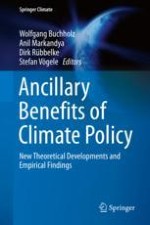This volume presents new developments in the research on ancillary benefits. Twenty years after the influential OECD report on ancillary benefits, the authors discuss theoretical innovations and offer new empirical findings on various ancillary effects in different world regions. Covering topics such as ancillary health effects associated with reduced air pollution, the influence of ancillary benefits on international cooperation on climate protection, co-effects of carbon capture and storage, ancillary effects of adaptation to climate change, multi-criteria decision analysis covering multiple effects of climate protection actions, and the analysis of primary and ancillary effects within an impure public goods framework, it provides starting points for further research on integrated climate policies seeking to address a range of policy objectives simultaneously.
